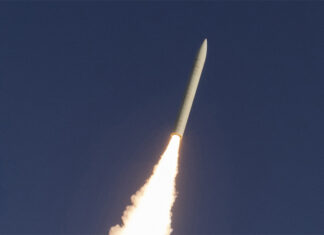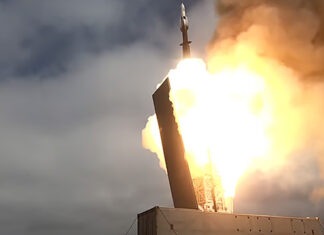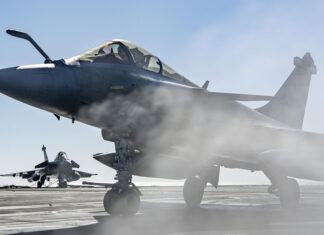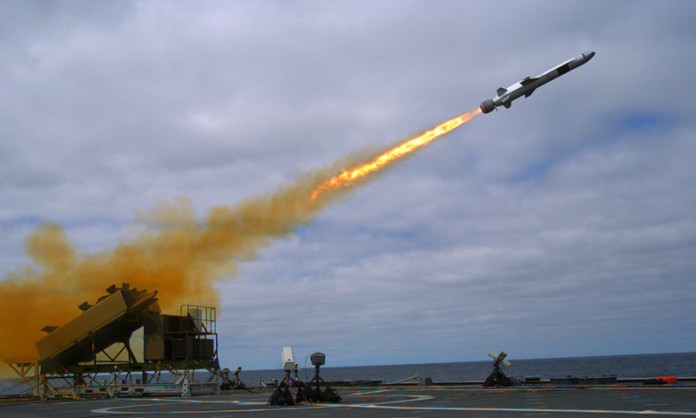
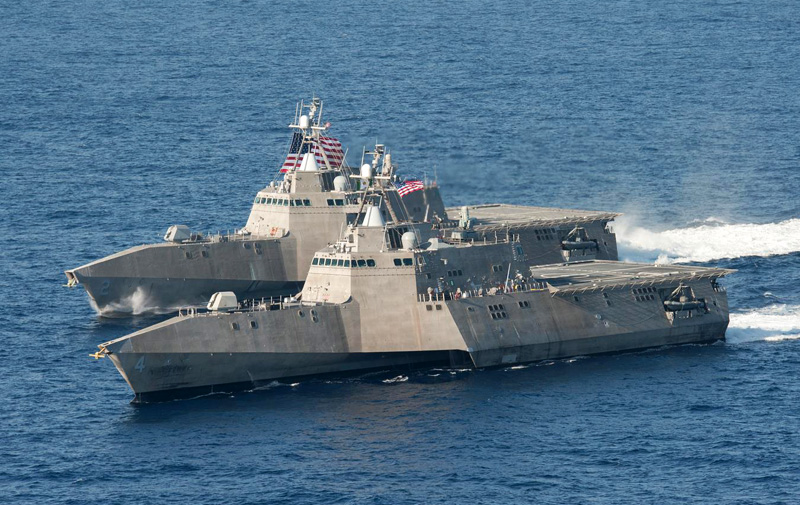
The crew of littoral combat ship USS Coronado (LCS 4) successfully performed a live-fire demonstration of a Kongsberg Naval Strike Missile (NSM) during missile testing operations off the coast of Southern California, Sept. 23, 2014. During the test, the Norwegian-made NSM was launched from the deck of Coronado and scored a direct hit on its intended target, a mobile ship target (MST). “We are extremely pleased with the outcome of today’s test on board Coronado,” said Vice Adm. Thomas Rowden, Commander, Naval Surface Forces. “We view this successful missile test as a possible future warfighting capability for the LCS program.” Rowden said the Navy is interested in increasing both quantity of firepower and range across the surface fleet.
Without the bulky but versatile Mk-41 Vertical Launch System which has been accepted as a standard launch systems for US surface combatants, the baseline configuration of the LCS lacks offensive weapons and, therefore, requires reliance on add-on missile systems such as Harpoon or the NSM to acquire precision offensive capability against surface targets. These could be added in the future to the surface combat mission packages designed for the LCS.
The demonstration followed a live firing of an NSM from the Royal Norwegian Navy’s Fridtjof Nansen frigate during the recent Rim of the Pacific (Rimpac) exercises. The test fire showed the NSM would function properly in the warmer, more humid conditions near Hawaii, wrote the Aerospace Daily & Defense Report.
During Rimpac, which concluded August 1, officers on Independence-class ships said the NSM will be the leading weapon to equip the LCS’ surface warfare package, but LCS officials have made it clear the missile still needs to prove itself with more tests. Navy program officials also say the NSM would still have to go through all the normal acquisition procedures to be considered for LCS deployment. [/ismemmber]
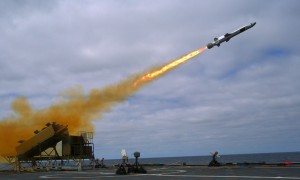
The NSM is a long range precision strike missile designed to be launched from a variety of ships against a variety of targets. The test conducted under the Pentagon’s Foreign Comparative Testing (FCT) program demonstrated how the LCS can readily accept new weapons systems. “Both classes of the LCS are based on modular design concepts,” said Rowden. “This allows for the integration of weapons and sensors like the Kongsberg NSM technology as part of the LCS warfare suite.” For the test the NSM launcher was installed on the Corodado’s aft deck.
Since 1980, the FCT program has helped the United States and allies reap substantial savings by avoiding research and development costs, lowering procurement costs, reducing risk for major acquisition programs and accelerating the fielding of equipment critical to the reading and safety of operating forces.
LCS delivers combat capability from core self-defense systems in concert with interchangeable, modular mission packages and an open architecture command and control system. Modularity mmaximisesthe flexibility of LCS and enables the ship to meet changing warfare needs, while also supporting rapid technological updates. LCS employs advanced tactical networks to share information with aircraft, ships, submarines, and joint and coalition units both at sea and shore.
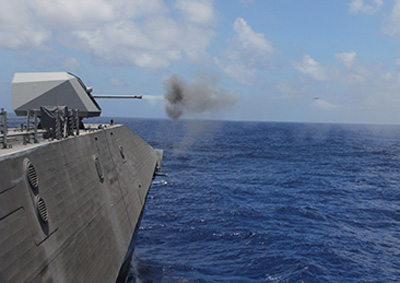
The recent test follows another firing trial performed by USS Coronado (LCS 4) last month, in conjunction with Combat System Ship Qualification Trial (CSSQT). As part of the developmental testing the ship crew used the vessel’s BAE Systems’ MK 110 57mm gun against representative fast attack craft. The exercises marked the first time an Independence variant ship fired its core weapon system (MK 110 57mm gun) against a High Speed Maneuvering Surface Target. The objective of the test was to measure the accuracy of the ship’s core weapon system against a fast attack craft.
“The Independence variant has the ability to enter and win the fight.” said Cmdr. Peter Kim, Coronado’s commanding officer. “Our CSSQT performance demonstrates the ship can enter a contested area at high speed, defend herself against missile and surface threats, and execute missions with the embarked mission package plus an enormous array of force options that can be rapidly employed by a Fleet Commander on short notice.”
This developmental test is part of a larger series of post-delivery test and trial events which will culminate in a full Technical Evaluation and Initial Operational Testing and Evaluation of the surface warfare mission package and sea frame in 2015. Coronado was commissioned in April, and completed Final Contract Trials in June, through which the ship and its major systems were exercised.




